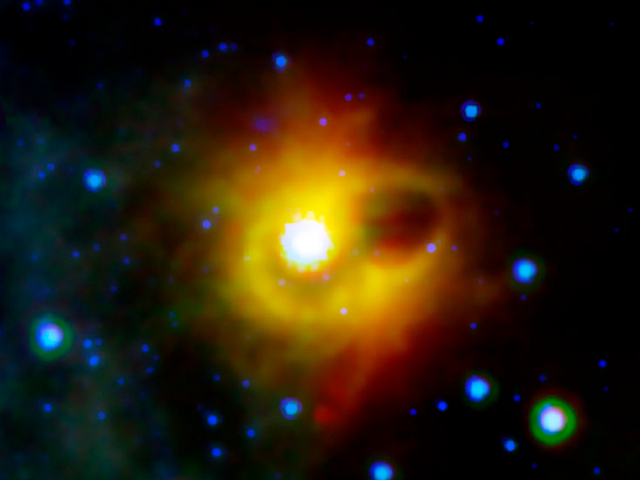Strongly magnetic pulsar could explain anomalous supernovas
Ars Technica » Scientific Method 2013-10-16

Supernovae are among the brightest events in the Universe, outshining whole galaxies at their peak. Even so, some are exceptional—these are called super-luminous supernovae. These events are typically the explosions of immense stars more than a hundred times the mass of the Sun, but two recently identified examples didn't quite fit the mold. They reached peak brightness too quickly before fading, and they exhibited uncharacteristic blue color.
These two super-luminous supernovae could instead be powered by magnetars, intensely magnetized neutron stars born in the collapse of the progenitor stars' cores. Analysis of the data by M. Nicholl and colleagues showed consistency between the explosions and observations of material heated by magnetars. Additionally, they found the behavior of the two supernovae to be completely unlike that of other super-luminous supernovae. While magnetar-driven explosions are rare, their existence could explain why some of the brightest supernovae don't match expectations.
Most super-luminous supernovae are driven by "pair instability," the production of electron-positron pairs during the death throes of a very massive star. The creation of these particles produces a rapid contraction in the dying star, resulting in a powerful nuclear explosion that blows everything apart, possibly leaving nothing behind. Pair-instability supernovae only occur if the star is more than about 140 times the mass of the Sun, so they are extremely rare.
Read 6 remaining paragraphs | Comments




